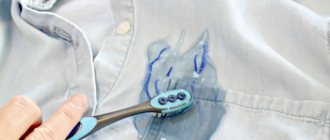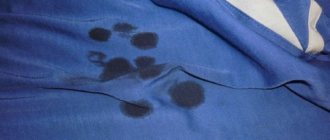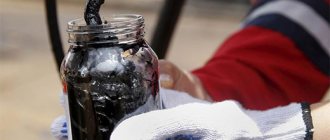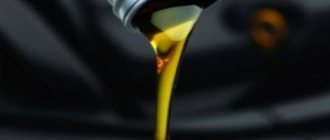If you are a young mother, every spring a certain problem awaits you. Imagine: you pick up your child from kindergarten, and the jeans you just bought, your favorite jacket and boots bought from an online clothing store, all have traces of a sticky yellow substance. A natural question arises: what is it and how to deal with it?
Surely the clothes were damaged by linden or poplar with their resin. At the beginning of spring (March or April), when the leaves have not yet blossomed, the buds on the linden trees swell, releasing a yellow substance that adds headaches to motorists and contaminates clothes.
Why are such contaminants so persistent?
If there are a lot of linden trees in the yard, then the buds will be everywhere - on the sidewalks and roads, benches, car roofs. From there, the sticky resin easily gets onto clothes and shoes. This applies to a greater extent to children who play outside.
When such dirt gets on jackets, raincoats and other outerwear, it leaves persistent, difficult-to-remove stains. Thus, a logical question arises: how to remove linden or similar stains from clothes, especially at home?
It is problematic to remove them from a car that also suffers from linden and poplar buds, but it is possible: buy a special product from an auto chemical shop, and the problem will be solved. You will have to tinker with things: sometimes the dirt is so difficult that the only thought that arises is: you have to throw it away.
Soaking and regular washing will not remove a greasy stain, because washing powders usually deal with dirty stains, traces of grease and food. Linden resin is a chemical compound of polymers. It does not dissolve in plain water or alkali solutions.
Even solutions of some acids do not have a positive effect. The substance strongly eats into the material, so cleaning it is problematic.
Cause of problem spots
In the past, many residents planted large numbers of linden and poplar trees in their yards.
This was done for the purpose of landscaping the yard, so that in hot summer weather you could enjoy the shade and coolness under a tree in your yard. No one expected that over time these trees would create so much inconvenience. With the arrival of spring, almost all the benches, sidewalks, curbs, windows, and cars acquired strange yellow spots in which the yard children were quickly busy.
Once on the fabric, the juice of linden and poplar buds strongly ate into it due to its sticky structure, which made all attempts to clean the fabric from these stains almost ineffective. For many housewives, this is a serious problem, because not everyone knows how to wash poplar buds from clothes.
Car enthusiasts are luckier, because many car shops, car washes and showrooms sell products that are applied to the body in order to maximally prevent the “sticking” of tree buds; when washing, they are easily removed from the body.
Traces that have become embedded in the fabric or varnish of a car body are very difficult and sometimes almost impossible to remove. Washing and powder soaking the clothes will not help; simply rubbing with a rag will not clean the body.
Let's turn to chemistry
To understand how to wash linden, let’s refresh our school knowledge. If you need to remove linden stains, you need to find a product that reacts with the resin. Among the solvents of resinous substances, at least four substances can be noted.
The best remedy is nitric acid, but for obvious reasons it is not suitable, because it causes significant harm to health.
Hydrobromic acid is not suitable for a similar reason. The third option - acetone - looks more attractive. Finally, you can use sodium hypochlorite - a household bleach with a strong bleach smell.
Of these options, only two are suitable: acetone and bleach. But be careful, as they can cause damage to your clothes. Practice shows that it all depends on the amount of pollutants and the type of soiled fabric.
If the material is natural and not brightly colored, there is a much greater chance of cleaning the item of clothing. Try to remove the lime stain using one of the methods - perhaps it will be effective.
How to wash poplar buds and linden pollen? Folk remedies
There is one method that effectively removes linden and poplar pollen from dark-colored clothing.
Turpentine
The use of turpentine is a folk method for removing linden from jeans or cleaning dark clothes. Our grandmothers used it very often. It works great, takes minimal time and costs little money. If you don't have turpentine at home, buy it at a hardware store. Since this is a very versatile tool, it will definitely come in handy in everyday life.
Mode of application:
- In a small container, mix half a teaspoon of turpentine and half an egg yolk. Mix the ingredients thoroughly until a homogeneous mixture is obtained.
- Apply the resulting mixture to the contaminated area and leave for several hours for better effect of the product.
- Finally, wash your clothes with laundry soap or stain remover.
Today there are many products that can help remove poplar from clothes, but they all have different effects on the fabric and human health. In our article, we described the simplest, but time-tested methods of how to wash linden and return your things to their former neat appearance.
Acetone or nail polish remover
After reading forums where similar cases are discussed, we came across a wonderful recipe. You need to take the usual liquid that is used to remove manicures, blot a cotton pad and remove the resin.
The only condition: the liquid must contain acetone. In this case, it will be useful. This is an important note, because now various additives and oils are added to similar products to cause less damage to the nails. In some there is no acetone at all.
A simple rule: carefully read the composition before starting to process the product. What is needed is the “regular” version, which contains a maximum of acetone. Pure acetone can be purchased at a hardware store that sells repair products, paints and varnishes.
Acetone is good for processing; it will even save shoes or a stroller if the need arises. The only negative: wardrobe items will have a specific smell for some time. Good ventilation will help get rid of the smell.
How to remove linden from clothes at home
During the period of active flowering of trees, it is very easy to obtain difficult-to-remove contaminants. These include linden stains. It has a yellow color and a characteristic odor. Linden is a polymer compound containing plant resins. Resins do not interact with water; they are insoluble in an aqueous environment.
The compounds do not react with most acids and alkalis. The only acids with which the resin reacts are nitric and hydrobromic. But in ordinary life you are unlikely to encounter them, especially since acids are toxic to both humans and tissue. Acetone and a number of similar organic compounds have properties that neutralize the resinous substance and absorb it from the site of contamination. Chlorine, which is part of concentrated chlorine-containing bleaches, has the same effect.
When it gets on clothing or skin, linden eats deeply into the structure of the fabric or skin and leaves a sticky residue. If you try to rub the stained area, the lime stain increases in size and eats into the fabric even more. If a linden stain was noticed immediately, you can try to remove it using laundry soap and a stiff brush. Wash the surface with a soapy solution and rub vigorously with a brush; the stain will begin to fade and then go away completely. This will help to remove a small lesion.
You need to start cleaning your clothes from linden immediately. The resin is instantly absorbed and remains in the fabric forever, there is a high risk of ruining the clothes.
Other healthy recipes
You can try cleaning white clothes with liquid bleach. In a hopeless situation, Domestos or its equivalent will do. Proceed with extreme caution, otherwise the fabric will simply dissolve.
Initially, turn the item inside out and test the effect on an inconspicuous area. If the last recipe does not work, try treating the stained area with gasoline and then washing it with soap.
As an almost win-win option, housewives recommend an anti-stain spray produced by Amway. Shake the can, apply a little spray to the fabric, hold for a certain time, wash with laundry soap.
You can treat lime stains with alcohol and then wash them off. The following recipe will help: 0.5 tsp. turpentine and the same amount of egg yolk (the first component can be replaced with white spirit). Treat the stain with the mixture, wait five hours and wash. Folk recipe: turpentine for dark clothes and soap alcohol for light ones.
How to remove linden from clothes
There are many options for how to remove linden stains from clothes, but not all of them can completely remove the stain. Several of the most effective options for removing poplar buds from clothes:
- Household chemicals. The cleanser should contain acetone, the more the better. It is necessary to apply the product to a cotton pad, after which the dirt should be removed using circular movements from the edge to the center. It is better to use several cotton pads. After treatment with the cleaning agent, clothes should be washed in a regular machine. Thanks to this method, even the white color of clothes will be saved.
- Heat. This method is based on increasing the temperature of the contaminated site. The resin will heat up and can be absorbed into another cloth or paper towel. After the stain is heated, you need to bring a napkin or cloth to the stained area and remove it with light pressure. This cleaning method can take up to half an hour.
- Ethanol. A substance that is found in every apartment is ethyl alcohol. The most popular solvent. It is necessary to moisten the cotton wool, then wipe the area with linden juice until the dirt is removed. Alcohol can only remove small stains.
- Kerosene, turpentine, gasoline. Undiluted, they are too concentrated, so they can only be used on old clothes. The substance must be applied to a cotton swab and gently soaked to remove dirt from the fabric. It is important not to touch the fabric too much, but to act on the dirt itself. To use the solvent on delicate fabric, you need to mix it with egg yolk in a 1:1 ratio, then process it, leaving it for 6 hours. After 6 hours, it will be enough to wash the item in the washing machine.
- Laundry soap. It will be effective in the fight against small stains that have not yet become embedded in the fabric. The area should be rubbed and left to sit for 30 minutes, after which the item should be washed.
Removing linden stains from the soles of shoes is a little easier than removing them from fabric. To do this, you need to moisten a cotton wool with alcohol or acetone and wipe the stained area on the sole. Then the shoes can be wiped with water and placed on the balcony to air out. The sole will be like new.
Professional products
You can always use special stain removers. They contain components that penetrate deep into the fibers and clean the product in a few minutes. However, in this case, such compositions cannot help every time, although they effectively cope with old and difficult stains and remove stains of grease, food and drinks.
You can use standard laundry soap. It contains an increased number of acids, due to which it can remove fresh yellow and sticky stains. Lather the contaminated area, leave for half an hour and rinse, finally wash in the washing machine or by hand with a suitable powder or gel.
Instead of laundry soap, you can use special Antipyatin soap. This is an inexpensive, safe and accessible product that easily removes various types of contaminants. It does not cause allergies and is even suitable for washing children's clothes. For the best way to wash children's clothes, see the link https://vsepodomu. ru/stirka/luchshee-sredstvo-dlya-detskogo-beliya/.
Liquid bleach
First, turn the material inside out and apply the product to the contaminated areas. After finishing the treatment, you should wash the item using laundry soap and rinse.
It is best to use bleach on white or light-colored fabric, otherwise there is a risk of washing off the paint from the material along with the stain. For colored clothes, special stain remover sprays are suitable.
If you are not sure about the safety of the product, check its performance on a small, inconspicuous area of the material. Be sure to use gloves to avoid damaging the skin on your hands during the process.
Instead of bleach, you can use Domestos or another similar product.
What not to do?
The use of each cleanser requires compliance with certain rules. However, there are general recommendations and prohibitions.
When removing natural and synthetic resin, you must not:
Wash the item until the stain is completely removed. Rushing the wash can cause the resin to spread to an even larger area of the fabric.- Scrape the stain with a sharp blade. This can lead to damage to the product, especially if it is made of silk, chiffon, or wool.
- Freeze items made from thin, easily torn fabrics in the freezer, as they can easily be damaged when removing a hardened drop.
- Use acids, alcohol, solvents to clean brightly colored fabrics. Organic reagents may discolor the fibers.
Effect of temperature on the stain
Denim is a fairly dense and reliable material. Its peculiarity is its specific coloring, which can be damaged by intense mechanical or chemical influence.
Temperature exposure is an alternative approach that includes:
- heat;
- freezing.
Heat
The purpose of the temperature effect is to make the resin viscous and easier to separate from the material.
Cover the stained area on both sides with napkins or pieces of cloth . It is necessary to insert a board wrapped in fabric into the trouser leg itself so as to isolate the contaminated area from contact with the other part of the trousers.
The iron is set to medium temperature and heating begins. As it heats up, the resin will begin to melt and saturate the napkin.
Wipes should be replaced periodically. The process is repeated until the stain is completely removed.
Cold
Freezing resin causes it to become brittle and crumble easily.
In order to expose the pants to low temperatures, they are placed in a plastic bag and placed in the freezer of the refrigerator . The minimum time for trousers to be in the freezer is about 1.5 hours.
After the jeans are removed from the refrigerator, you must immediately begin removing the resin. The area with the stain should be beaten so that the resin crumbles. The fragments will just need to be chickened out. Brushing will help completely remove remaining resin.
Total information
Linden resin is a special chemical compound consisting of polymers that eat into any material. So how to wash poplar and what to use for this? It is pointless to remove stains with means such as powder, since they are aimed only at removing dirt or greasy stains, and poplar resin does not lend itself to them.
Housewives think that if she once washed with powder or soap, then next time these cleansers will also help. But in fact, only fresh contamination can be eliminated using this method. Others mistakenly assume that soaking will help to wash poplar buds, but the resin trace cannot be dissolved in ordinary water or soap solution. How to remove stubborn stains?
To cope with poplar stains, you will need acetone or other fairly aggressive agents.
In order to know for sure how to remove linden from clothes next time, you need to follow certain tips:
Cleaning delicate fabrics
- The resinous imprint left on the fur or wool is wiped with vegetable oil. After 25 minutes, wash off the marks with a soft cloth soaked in dishwashing gel.
- Valuable fur is carefully wiped with medical alcohol.
- For a dark wool sweater, turpentine is suitable.
- It is advisable to clean a light-colored wool product with alcohol in which shavings of white baby soap are dissolved.
- The suede is moistened with medical alcohol and grains of resin are combed out in the direction of the pile with a brush with short metal teeth.
- Velvet fabric, natural silk, velor, acetate fabric are treated with alcohol. Or a composition of alcohol, turpentine, potato starch in a ratio of 1:1:2. Maintain on contamination for 12 hours. Before washing, rinse the product in cold water.
- If the fabric cannot be washed, the resin is moistened with ether and then soaked in medical alcohol. If necessary, repeat the procedure.
Methods
Going through the forum sections with the question of how to remove yellow stains from poplar, you can come across a recommendation: “Take regular nail polish liquid, wet a cotton swab with it and gradually remove the stains.” As we know, nail polish remover is acetone. And he, according to the table, can remove resin. Therefore, this method suits us.
Please note that recently they have begun to add all sorts of oils and additives to nail polish remover to make nails less likely to deteriorate. There are such liquids without acetone. The word “ordinary liquid” is key here, implying that the composition contains only acetone. Therefore, if you want to effectively clean your clothes, look at what your product consists of before use.
You can also buy acetone where they sell paints and varnishes for repairs. The product really pays off, since it can even be used to clean shoes and strollers if necessary. True, things will have a specific smell for some time, so they need to be ventilated.
If your clothes were perfectly white, you can use liquid bleach. As a last resort, try Domestos or something like that, just be careful not to dissolve the fabric too.
Cleaning Methods
In most cases, various means are used to remove these types of stains.
Every girl at least once in her life scrubbed paint stains with acetone, which is quite suitable for this type of stain. That is, it should be a liquid that you use to remove polish from nail plates, or rather a product that contains as much acetone as possible. Some people mistakenly assume that gentler products will also help, but in fact, only acetone and solvents can deal with stains of poplar resin secreted by the kidneys.
Using this product to remove stains is very simple; to do this, you need to blot a cotton pad with acetone and move in a circular motion from the edges to the central part of the stain. In order not to stain the item even more while the mark is being removed, the cotton wool will need to be changed as soon as it gets dirty.
Once the woman has removed the stain, she will need to wash the item, since the unpleasant odor may remain for a long time.
Other cleaning methods:
All stain removers designed to remove poplar buds from clothing must be used exclusively in accordance with the instructions. That is, even if you have not washed off the stain, you should not use a larger amount, as this can harm any fabric, especially those places that were not stained by linden. To ensure that the stains are removed, you may need to repeat the procedure several times.
After the housewife has dealt with such contamination once, she will forever remember how to remove stains and what is required for this. In addition, this question will always be relevant in the spring, when people often walk under poplars and other trees.
If laundry soap does not help in cleaning, you can resort to the following methods:
Acetone, nail polish remover
Since resin is a complex chain of polymer compounds, it can be destroyed using organic solvents.
But there is a small chance of ruining the fabric on the clothes, so it is better to first try to drop a little liquid or acetone on the wrong side in a less noticeable area and see what happens to the fabric and color. If the color and structure of the fabric remain the same and have not changed, then you can begin to remove the lime stain. If you have nail polish remover at home, it is better to use that first because it contains less acetone or its derivatives and is less toxic. However, in terms of effectiveness, nail polish remover is inferior to acetone. A small amount of liquid or acetone is applied to a cotton pad, and then to the contaminated surface, rubbed in and left for 3-4 minutes. Assess the stain. If it has decreased in diameter or lost its intense color, then continue cleaning using a new cotton pad. Apply solvent to the problem area up to 3-4 times; it is not recommended anymore, since the tissue structure becomes thinner and can be damaged. Then, after cleaning, the product is washed to remove odors and stains.
Stain removers, household chemicals
These products have a targeted effect on the destruction of linden resin and help remove it from the surface of clothing. For white items, you can try removing the stain with bleach, and for colored items, use a stain remover. It will be better if the product has a gel consistency. The gel penetrates deeply into the fibers of the fabric and removes resinous compounds. Pour a little gel stain remover or other product onto the stained area and leave it for 5-10 minutes. The product is then machine washed as usual.
Ethyl and ammonia
Since these compounds are of organic origin, they quickly destroy the polymer bond of the resin, thereby removing contamination. Alcohol is applied using a napkin soaked in it and applied several times to the area of contamination. After a couple of actions, the stain will noticeably fade and soon disappear completely.
Thermal methods
When heated, linden resin becomes plastic and soft, and at low temperatures, on the contrary, it becomes hard. This property can be used for effective cleaning. Heat the iron and place a clean cloth over the stained area. Pass a hot iron over the contaminated surface. The linden marks transfer to the napkin. The process is repeated several times until the contamination completely disappears. There is a high probability that this method will help clean your clothes. If the item cannot be ironed, for example, due to the fine texture of the fabric, then it is frozen in the freezer or rubbed with an ice cube. At the same time, the resin begins to harden. Then use a scraper or a stiff brush to remove the dried stain.
Liquid bleach
First, turn the material inside out and apply the product to the contaminated areas. After finishing the treatment, you should wash the item using laundry soap and rinse.
It is best to use bleach on white or light-colored fabric, otherwise there is a risk of washing off the paint from the material along with the stain. For colored clothes, special stain remover sprays are suitable.
If you are not sure about the safety of the product, check its performance on a small, inconspicuous area of the material. Be sure to use gloves to avoid damaging the skin on your hands during the process.
Instead of bleach, you can use Domestos or another similar product.
Even more useful tips around the house on our Yandex channel. Zen. Subscribe!











